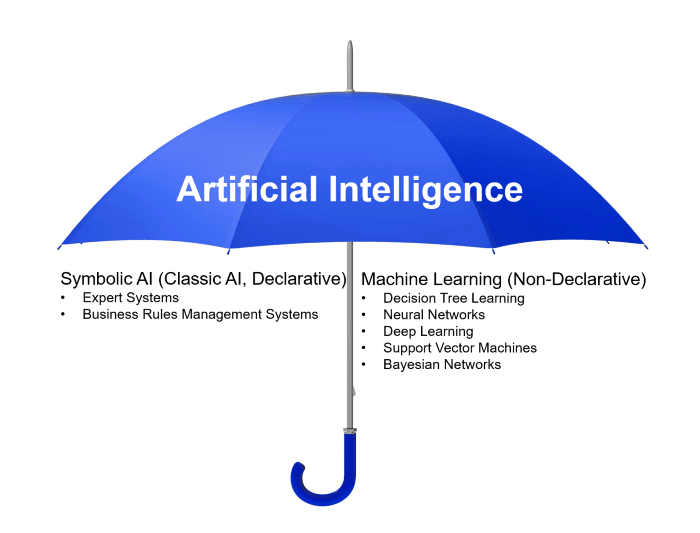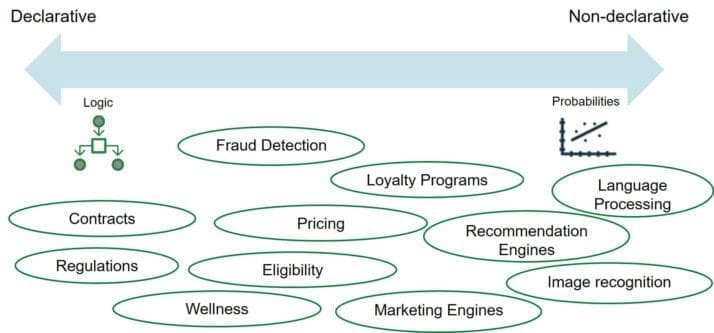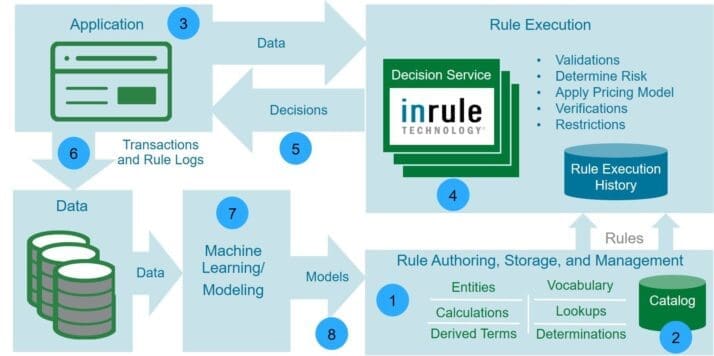Artificial intelligence, and more specifically machine learning, is everywhere these days. We hear about applications for facial recognition, product recommendations, fraud detection, hedge fund trading, airline pricing, natural language processing, medical diagnosis, health monitoring – you name it. It seems like it is the solution to every kind of problem out there.
Machine learning holds great promise. It can help tease out decisions from a seemingly infinite amount of data. It can “learn” over time as more data is presented to it. Finally, it can provide insights into data that was previously not known.
But getting machine learning right can be tricky. It’s important to consider an approach that allows you to manage and organize your decisions in a cohesive manner and provide guardrails so you can avoid the potential unintended consequences of an algorithm gone awry.
Decisions, Decisions
As organizations embark down the path toward digital transformation, the goal is to augment, and if feasible automate, as many decisions as possible. This automation will save not only money and preserve resource bandwidth, but most importantly it will play a vital role in delivering a superior customer experience.
However, as modern technologies have allowed us to capture myriad types and quantities of data, how can we make sense of it and turn it into something that is actionable?
That’s where AI and more specifically, machine learning can help. The combination of machine learning and decision management technologies allow us to make more accurate decisions based on more data points faster than ever before.
Artificial Intelligence (AI) and Machine Learning: A Mini-Primer
For background, AI is the computer science pursuit to use algorithms and techniques to mimic human intelligence. It’s been around for decades and AI is really an umbrella term under which a lot of business technologies fall.
Underneath AI, there’s symbolic AI which is declarative logic and includes expert systems and business rules management systems. Declarative AI takes data and pre-defined logic as the input and the output is more static, rule-based and not generalized.
On the flip-side of symbolic AI (declarative), you find the non-declarative side which is where Machine learning resides. With machine learning you can choose from many different kinds of algorithms including decision tree learning, neural networks, deep learning, support vector machines and Bayesian networks. The type of AI you choose generally depends on the problem you are trying to solve and the size, quality and nature of the data you have.
With non-declarative logic, you take in historical data and the historical output and the machine delivers logic that is dynamic, data-driven and generalized. For example, if you’re looking for fraudulent claims and you pass in a bunch of claims data, you include data on claims that were both fraudulent and not fraudulent. Once you pass it in, the machine develops the logic that you need to do your thinking with.
One important note: when you go to solve a problem, the solution is not always exclusively symbolic AI or machine learning. There is a spectrum with pre-defined logic on the declarative side and probabilities on the non-declarative side.
For example, on the declarative end of the spectrum you find customer contracts for pricing. The specifications are firm and a machine can’t adjust pricing in the middle of the term. On the opposite end of the spectrum, we find image recognition. It is non-declarative and probabilistic and adjustments/refinements can be made over time in order to become more accurate. Building out an entire rulebase to determine the variations in image recognition just wouldn’t be practical.
A use case that lands in the middle of the spectrum would be a recommendation engine. In the early days of Amazon or Netflix, the recommendation engines were probably more declarative, logic-driven and rule-based and as time has passed, they’ve become more machine learning-based. However, there is likely still a rule-based element that provides guardrails. This would include rules that specify the type of items or content that should not be marketed to a minor, such as alcohol or R-rated content.
Challenges of Machine Learning
Machine learning is difficult to get right. For starters, it requires a lot of data, the data has to be clean, and in some cases the data needs to be enriched. If you don’t have enough quality data, you run the risk of overfitting the model and you can make the wrong assumptions. Effective use of machine learning requires establishing a data science discipline so that you don’t make costly mistakes or errors, such as false positives, false negatives or gaps in the machine learning thinking. Lastly, machine learning provides little to no transparency into the logic or decisions that are made by the system.
Rule Technology and Machine Learning
Rule technology is a great way to establish a foundation for a machine learning approach. First, it can help ensure your data is ready for that type of environment. Rule technology provides an avenue for data clean up and validation and data enrichment, which helps make machine learning models more accurate. Second, rule technology can automate decisions more quickly and with greater transparency helping to ensure compliance with regulations or adherence to corporate guidelines. Finally, rule technology can help operationalize the machine learning model. I’ve seen quite a few of InRule’s larger customers leverage machine learning and predictive analytics to come up with the model, but then they operationalize it using the rule technology.
Putting it All Together
I’ve created the diagram below to summarize how machine learning and rule technology can be used together inside an enterprise.
You start with rules as the baseline and set logic around what you think is fraudulent or not fraudulent and you store these rules in the catalog. The application processes a transaction and has to make a decision on whether it’s authentic or not so it passes a query into the InRule Decision Service to assess the validity of the request. It pulls the rules from the catalog to determine the authenticity. It’s going to pass a decision back to the application, which will store the transaction and the rule logs to the database. At a point in the future, when you decide you have enough data, you run the machine learning against that data and you generate a model that will then be fed back into the rule technology.
As our world continues to be defined by a trend toward action in real-time with more data and growing complexity, automation will shift from a business interest to a business requirement that can make or break a company’s ability to keep pace with growing customer expectations and the ever-increasing speed of business. The use of rule technology in tandem with machine learning makes this next generation of digital transformation more approachable and attainable.





